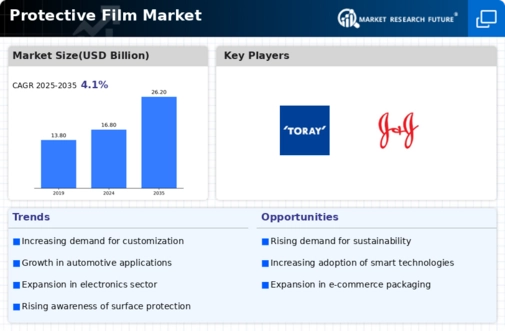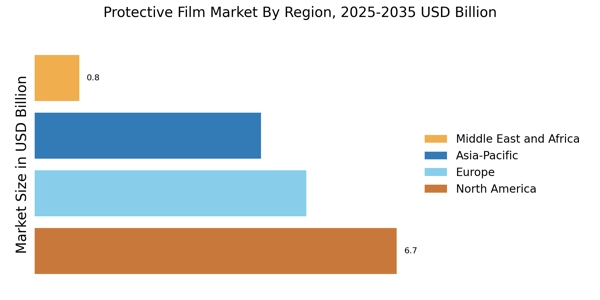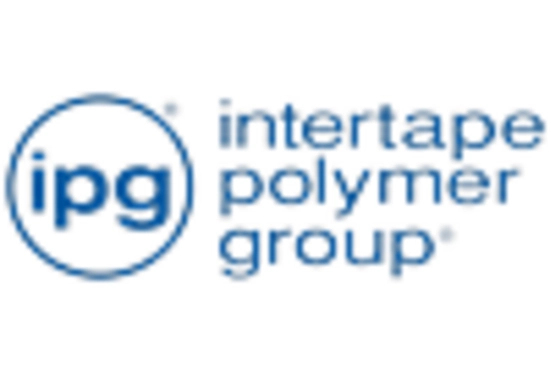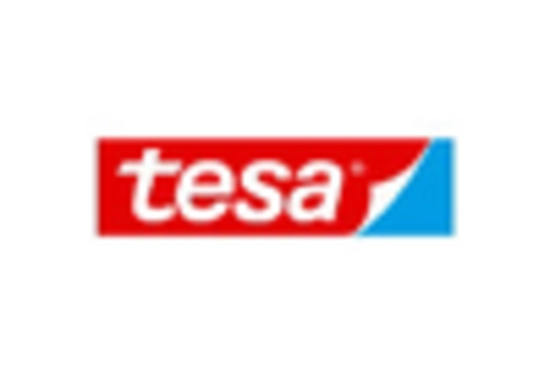Rising Demand from Automotive Sector
The Protective Film Market experiences a notable surge in demand from the automotive sector. As vehicle manufacturers increasingly prioritize aesthetics and durability, protective films are utilized to shield surfaces from scratches, chips, and environmental damage. In 2025, the automotive segment is projected to account for approximately 30% of the overall market share. This trend is driven by consumer preferences for vehicles that maintain their appearance over time, thereby enhancing resale value. Additionally, the integration of advanced technologies in automotive design necessitates protective solutions that can withstand harsh conditions. Consequently, the Protective Film Market is likely to witness sustained growth as automotive manufacturers adopt these films to meet consumer expectations.
Growth in Electronics and Consumer Goods
The Protective Film Market is significantly influenced by the electronics and consumer goods sectors. With the proliferation of smartphones, tablets, and other electronic devices, the need for protective films has escalated. In 2025, the electronics segment is anticipated to represent around 25% of the market. These films serve to prevent scratches and damage during manufacturing, transportation, and everyday use. As consumers increasingly invest in high-end electronics, the demand for protective solutions that preserve device integrity becomes paramount. Furthermore, manufacturers are incorporating protective films into their production processes to enhance product longevity and customer satisfaction. This trend indicates a robust growth trajectory for the Protective Film Market in the electronics domain.
Increased Awareness of Surface Protection
Consumer awareness regarding the importance of surface protection is a driving force in the Protective Film Market. As individuals become more informed about the potential damage caused by environmental factors, the demand for protective films rises. This heightened awareness is particularly evident in sectors such as construction and home improvement, where protective films are employed to safeguard surfaces from dust, scratches, and other contaminants. In 2025, it is estimated that the construction sector will contribute approximately 20% to the market. This trend suggests that as consumers prioritize the maintenance of their investments, the Protective Film Market will continue to expand, catering to a growing audience seeking effective protective solutions.
Regulatory Support for Protective Solutions
Regulatory frameworks promoting the use of protective solutions are influencing the Protective Film Market. Governments are increasingly recognizing the importance of surface protection in various sectors, leading to the implementation of standards that encourage the adoption of protective films. This regulatory support is particularly evident in industries such as construction and automotive, where compliance with safety and quality standards is paramount. In 2025, it is projected that regulatory initiatives will contribute to a market growth rate of approximately 10%. As companies strive to meet these regulations, the demand for protective films is expected to rise, further solidifying the Protective Film Market's position in the marketplace.
Technological Innovations in Film Production
Technological advancements in film production are reshaping the Protective Film Market. Innovations such as self-healing films and advanced adhesive technologies enhance the performance and durability of protective films. These developments not only improve the functionality of the films but also expand their applications across various industries, including automotive, electronics, and construction. In 2025, the introduction of new materials and production techniques is expected to drive market growth, with an estimated increase of 15% in overall market value. As manufacturers invest in research and development, the Protective Film Market is likely to benefit from enhanced product offerings that meet evolving consumer needs.


















Leave a Comment